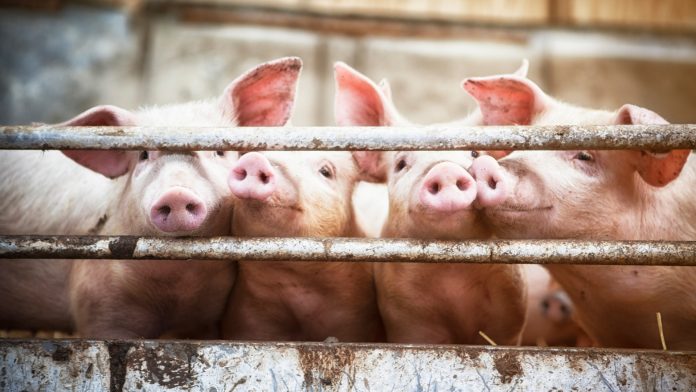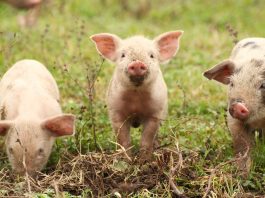Researchers from the Okinawa Institute of Science and Technology Graduate University (OIST) have developed a system for treating wastewater from pig farming, making the industry more sustainable.
Okinawa, a subtropical island in Japan, has a widescale pig farming industry, with estimates suggesting there are over 225,000 pigs on the island. While the farms have a big impact on the island’s economy and culture, the sewage is an unpleasant by-product of the industry.
Across the island, large quantities of wastewater are produced by the pig farming industry. Now, researchers from the Biological Systems Unit at OIST have developed a new method for treating this wastewater, which has been effectively tested on a local pig farm in Okinawa.
“Our new system uses two different chambers,” explained Dr Anna Prokhorova, lead author of a paper recently published in Bioresource Technology. “In the one chamber, full strength swine wastewater is treated for the removal of odour, pathogens, and organic matter, whereas in the other chamber, excess nitrate and phosphate is removed from wastewater that has already been treated through the traditional aeration system. To the best of our knowledge, this is the first system to successfully treat two different types of wastewater at the same time.”
The typical aeration system presently used by farmers mainly treats organic matter in the wastewater and converts ammonium into nitrate but does not treat the nitrate further. In Japan, the nitrate discharge limit for the livestock industry is to be reduced to one fifth of the current level (which currently sits at 500 milligrams of nitrate-nitrogen per litre) to be in line with other industries. It is estimated that more than 35% of farms in Okinawa will surpass this imminent limit change.
“This is of huge concern because nitrate contamination can have disastrous impacts on both human health and the environment,” commented Dr Mami Kainuma, group leader in the Biological Systems Unit. “When nitrate is ingested by people, it is converted to nitrite, which impacts the bloods’ ability to carry oxygen and can lead to methemoglobinemia or blue baby syndrome.”
The newly developed method relies on a rich community of bacteria to start the process. In the first chamber – the anode chamber – the bacteria responded to the organic molecules present, releasing electrons in the process. Then, the electrons were transferred to the second chamber – the cathode chamber – through the electrodes. The cathode chamber included wastewater that previously went through the aeration process and consequently had elevated levels of nitrate.
Bacteria on the surface of the cathode chamber accept these electrons and used them to power the conversion of nitrate to nitrogen gas. The benefit of this method is that the nitrate removal can happen in wastewater with low organic matter content, such as the already-aerated water.
After successful trails in the lab, the team took the experiment to a pig farm in Okinawa, where they could access the aeration tank and raw wastewater. This long-term experiment showed that the dominant nitrate-removing bacteria could receive electrons to grow.
During the treatment, their activity was accelerated by applied potential to the electrode in a range of -0.4V to -0.6V, which resulted in more effective treatment of the wastewater. Such bacterial communities grew by over 60% in total in the cathode chamber, exhibiting strong activity and resulting in a high rate of nitrate reduction.
An Additional benefit was that, as the organic matter and, in particular, the volatile fatty acids were degraded in raw wastewater, the smell was diminished, and the number of pathogens decreased.
“We’re very happy with the results so far. It’s much more efficient than we expected,” added Dr Prokhorova. “This system is scalable, low cost, easy to assemble, and low maintenance. We’re hopeful that, within the next few years, it will be utilised by farmers in Okinawa and other locations with similar issues, such as rural communities in mainland Japan and Southeast Asia.”





